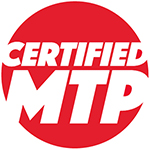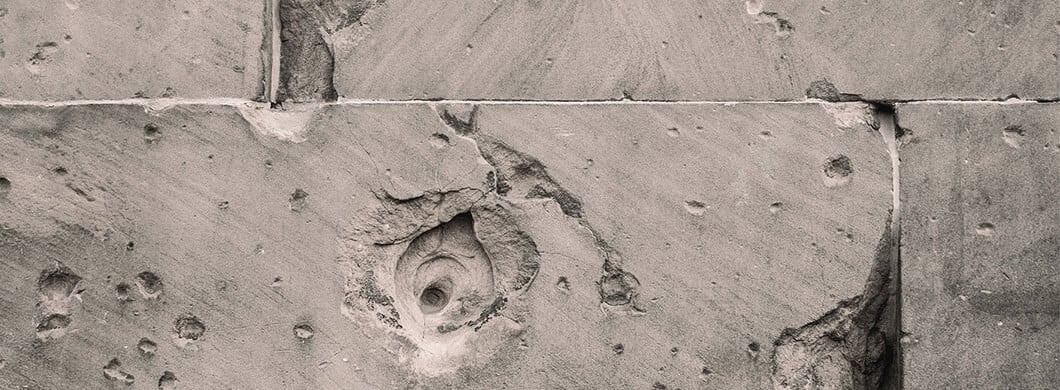The Certified Material Testing Products experts love giving advice and helpful information to our customers and prospective customers. The importance of concrete testing is lost on some and understood by few in the materials testing world. We’re here to give some helpful information and advice.
Firstly, it’s important to know why: concrete is tested to ensure that the material that was specified and bought is the same material that was delivered to you or the job site. There are a dozen of test methods for freshly mixed concrete, as well as at least another dozen for hardened concrete. Slump, air content, unit weight, and compressive strength tests are the most common tests.
To go into further details
Slump tests measure the relative ability of the concrete to flow. If your concrete can’t flow because the slump is too low, you’re potentially going to have problems with proper consolidation. If the slump is too high and your concrete doesn’t stop flowing, you may experience mortar loss, formwork pressures, finishing delays, and segregation.
Testing for air content measures just that, the total air content in fresh concrete. However, it doesn’t indicate what the final in-place air content will be.
Your unit weight test will measure the weight of your sample of concrete.
Compressive strength tests are conducted by pouring a cylinder of fresh concrete and measuring the force needed to break the concrete cylinder. Normally, as long as no single test is more than 500 psi below the design strength, then the concrete is acceptable.
If you need to purchase any materials testing equipment to replace or add to your lab supplies, shop at Certified Materials Testing Products for your one stop shop for all your testing products. We have the knowledge and equipment to back you up, when you need it most. Start shopping online with us today and find exactly what you are looking for. Contact us now to have any of your questions or concerns answered
Concrete Tests: Ensuring Structural Integrity and Quality
Concrete testing is a fundamental aspect of the construction industry, critical for ensuring the quality, safety, and longevity of concrete structures. This comprehensive 800-word overview covers the importance, methods, applications, and challenges of concrete testing.
1. Importance of Concrete Tests
– Quality Assurance: Testing verifies that concrete meets specified strength and quality standards, essential for structural integrity.
– Safety Compliance: Ensures the safety of structures by preventing failures due to substandard concrete.
– Regulatory Adherence: Helps in complying with local and international building codes and standards.
– Durability Assessment: Evaluates concrete’s ability to withstand environmental conditions and wear over time.
2. Types of Concrete Testing
– Fresh Concrete Testing: Includes slump tests, air content tests, and temperature checks to assess workability and consistency.
– Hardened Concrete Testing: Involves strength testing, durability tests, and permeability assessments to evaluate the concrete’s long-term performance.
– Non-Destructive Testing (NDT): Methods like ultrasonic pulse velocity and rebound hammer tests assess the properties of hardened concrete without causing damage.
3. Common Concrete Test Methods
– Compression Test: The most common test for measuring the strength of concrete. It involves crushing concrete cylinders or cubes to failure.
– Slump Test: Measures the consistency of fresh concrete before it sets, indicating workability.
– Air Content Test: Determines the air void content in concrete, crucial for freeze-thaw durability.
– Permeability Test: Assesses the resistance of concrete to water penetration, important for structures exposed to moisture.
– Flexural Strength Test: Determines the tensile strength of concrete, especially important in pavements.
4. Equipment Used in Concrete Testing
– Compression Testing Machines: For applying load and measuring the strength of concrete samples.
– Slump Cones and Tamping Rods: Basic tools for performing slump tests on site.
– Air Meters: Measure the air content in fresh concrete.
– Ultrasonic Pulse Velocity Testers: For assessing the quality and homogeneity of concrete.
5. Standards and Specifications
– Adherence to ASTM, ISO, and EN standards is essential for consistency in testing methods and result interpretation.
– Standards ensure the reliability and accuracy of testing procedures.
6. Mix Design and Quality Control
– Concrete mix design is the process of selecting suitable ingredients and determining their proportions to achieve the desired properties.
– Regular testing at different stages of concrete production ensures consistent quality and adherence to design specifications.
7. Applications of Concrete Tests
– Building Construction: Ensures the structural safety and longevity of buildings.
– Infrastructure Projects: Critical for bridges, dams, tunnels, and other large-scale structures.
– Pavements and Roadways: Assesses the suitability of concrete for use in roads and pavements.
8. Challenges in Concrete Testing
– Variability in raw material quality can affect consistency in concrete properties.
– Environmental factors such as temperature and humidity can impact testing results.
– Adapting to evolving concrete technologies and mix designs, like high-performance and green concretes.
9. Environmental and Sustainability Considerations
– Increasing focus on sustainable and eco-friendly concrete mixes.
– Testing for environmental impact and lifecycle assessment of concrete structures.
10. Advancements in Testing Techniques
– Digital and automated testing equipment for enhanced precision and efficiency.
– Development of advanced NDT methods for more comprehensive assessments of concrete structures.
11. Training and Expertise Required
– Skilled technicians are needed for accurate execution and interpretation of concrete tests.
– Continuous training is essential to stay updated with the latest testing methods and technologies.
12. Cost Implications and Budgeting
– While concrete testing involves additional costs, it is crucial for ensuring the long-term success and safety of construction projects.
– Investing in quality testing equipment and trained personnel can lead to significant savings by preventing construction failures and ensuring compliance.
13. Future Trends in Concrete Testing
– Integration of artificial intelligence and machine learning for predictive analysis in concrete testing.
– Development of more sustainable and efficient testing methods and materials.
Conclusion
Concrete testing is an indispensable aspect of the construction industry, playing a crucial role in ensuring the safety, performance, and durability of concrete structures. From mix design and fresh concrete testing to hardened concrete analysis and NDT, concrete testing encompasses a range of techniques and methodologies. As the industry evolves, so does the field of concrete testing, with technological advancements leading to more sophisticated and efficient testing methods. The importance of concrete testing in maintaining industry standards, fostering innovation, and ensuring the longevity of structures cannot be overstated. It remains a dynamic and vital field, essential to the advancement of modern construction practices.
Related Blogs for Concrete Tests:
Correctly Measure Cracks and Fissures with a Concrete Testing Product
What is Non-Destructive Testing of Concrete?
Ultrasonic Pulse Velocity Test | Concrete Non-Destructive
Understanding Non Destructive Test: Methods & Applications
Crack Measurement in Concrete: A Guide to Accurate Results
Slump Test of Concrete: A Comprehensive Guide
How to Perform a Slump Test of Concrete: Steps and Results
How to Calculate Unit Weight Concrete in 2023
Determining Unit Weight of Concrete for Accurate Measurement

